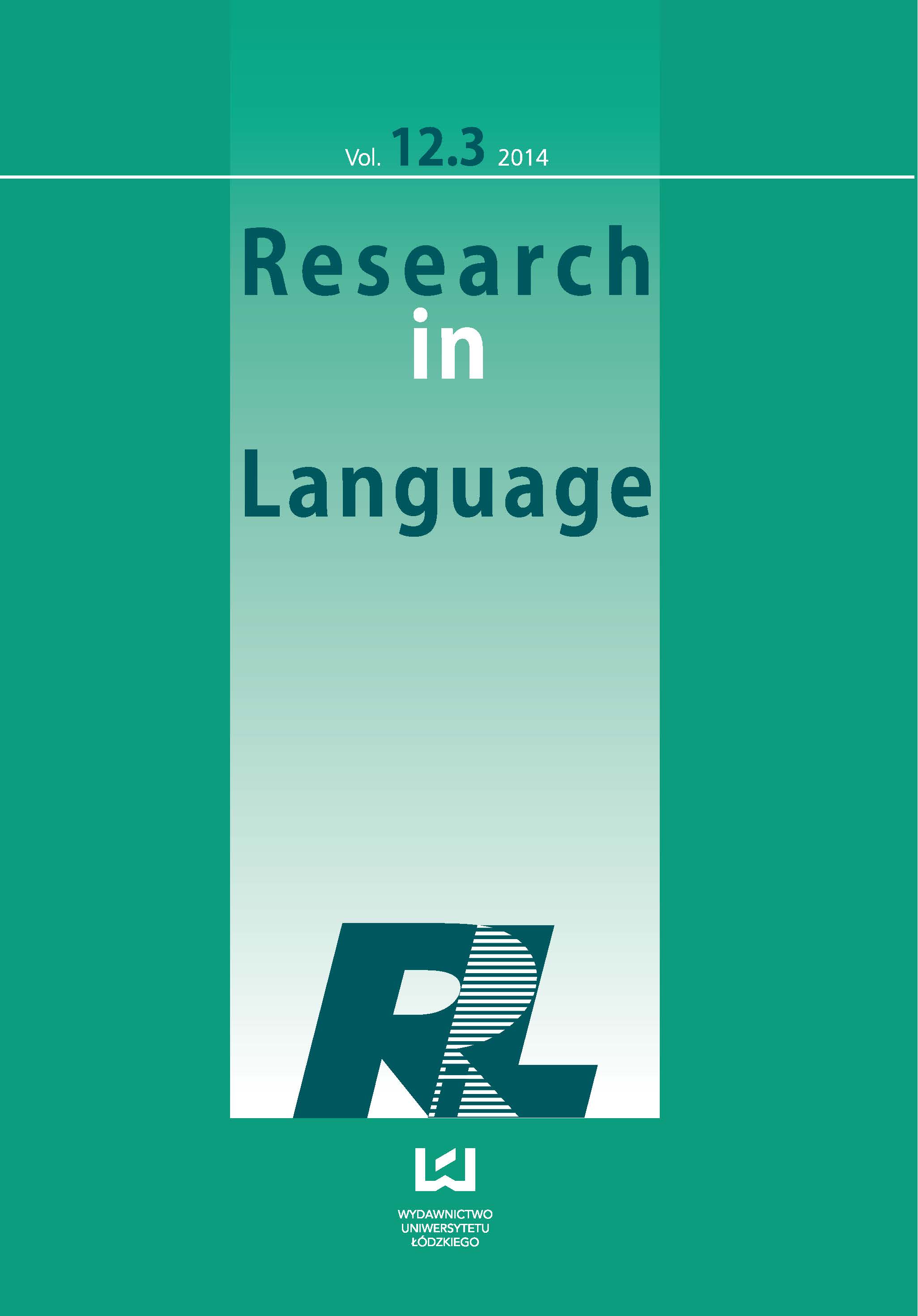The Influence of Attention to Language Form on the Production of Weak Forms by Polish Learners of English
DOI:
https://doi.org/10.2478/rela-2014-0017Abstract
The paper discusses a study whose aim was to examine the impact of attention to language form and task type on the realisation of English function words by Polish learners of English. An additional goal was to investigate whether style-induced pronunciation shifts may depend on the degree of foreign accent. A large part of the paper concentrates on the issue of defining ‘weakness’ in English weak forms and considers priorities in English pronunciation teaching as far as the realisation of function words is concerned. The participants in the study were 12 advanced Polish learners of English, who were divided into two groups: 6 who were judged to speak with a slight degree of foreign accent and 6 who were judged to speak with a high degree of foreign accent. The subjects’ pronunciation was analysed in three situations in which we assume their attention was increasingly paid to speech form (spontaneous speech, prepared speech, reading). The results of the study suggest that increased attention to language form caused the participants to realise more function words as unstressed, although the effect was small. It was also found that one of the characteristics of English weak forms, the lack of stress, was realised correctly by the participants in the majority of cases. Finally, the results of the study imply that, in the case under investigation, the effect of attention to language form is weakly or not at all related to the degree of foreign accent.
References
Beebe, L. (1980) Sociolinguistic variation and style shifting in second language acquisition. Language Learning 30, 433-447.
Google Scholar
Bowen, D. J. (1972) Contextualizing pronunciation teaching in the ESOL classroom. TESOL 5, 83-97.
Google Scholar
Cruttended, A. (2008) Gimson’s pronunciation of English. London: Hodder Education.
Google Scholar
Dickerson, L. and Dickerson, W. (1977) Interlanguage phonology: current research and future directions. In S. P. Corder and E. Roulet (eds). The Notions of Simplification. Interlanguages and Pidgins: Actes du Seme Colloque de Linguistique Applique de Neufchatel, 18-30.
Google Scholar
Dziubalska-Kołaczyk, K., Bogacka (Balas), A, Pietrala, D., Wypych, M. and Krynicki, G. (2006) PELT: An English language tutorial system for Polish speakers, MultiLing, Volume ISCA Tutorial and Research Workshop on Multilingual Speech and Language Processing, Stellenbosch, South Africa, p.on CD.
Google Scholar
Collins, B. and Mees, I. M. (2009) Practical phonetics and phonology. A resource book for students. New York: Routledge.
Google Scholar
Gatbonton, E. (1975) Systematic variations in second language speech: a sociolinguistic study. PhD Dissertation, McGill University.
Google Scholar
Jenkins, J. (1998) Which pronunciation norms and models for English as an International Language? ELT Journal, 52/2:119-126.
Google Scholar
Labov, W. (1969) The study of language in its social context. Studium Generale 23, 30-87.
Google Scholar
Lane, L. (2010) Tips for Teaching Pronunciation: A Practical Approach. Harlow: Pearson Longman.
Google Scholar
Lin, Y. (2001) Syllable simplification strategies: a stylist perspective. Language Learning 51, 681-718.
Google Scholar
Roach, P. (2010) English Phonetics and Phonology. A practical course. Cambridge: Cambridge University Press.
Google Scholar
Schmidt, R. (1987) Sociolinguistic variation and language transfer in phonology. In G. Ioup and S. H. Weinberger (eds), Interlanguage phonology: The acquisition of a second language sound system. Rowley, MA: Newbury House.
Google Scholar
Shockey, L. (2003) Sound Patterns of Spoken English. Oxford: Blackwell Publishing.
Google Scholar
Setter, J. (2006) Speech rhythm in World Englishes. The Case of Hong Kong. TESOL Quarterly 40, 763-782.
Google Scholar
Sobkowiak, W. (2001) English Phonetics for Poles. Wydawnictwo Poznańskie.
Google Scholar
Weinberger (eds), Interlanguage phonology: The acquisition of a second language sound system. New York: Newbury House, 365-377.
Google Scholar
Tarone, E. (1979) Interlanguage as chameleon. Language Learning 29, 181-191.
Google Scholar
Tarone, E. (1982) Systematicity and attention in interlanguage. Language Learning 32, 69-84.
Google Scholar
Weinberger, S. H. (1987) The influence of linguistic context on syllable structure simplification. In G. Ioup and S. H. Weinberger (eds), Interlanguage phonology: The acquisition of a second language sound system. Rowley, MA: Newbury House, 401-417.
Google Scholar
Zampini (1994) The Role of Native Language Transfer and Task Formality in the Acquisition of Spanish Spirantization. Hispania 77, 470-481.
Google Scholar
Downloads
Published
How to Cite
Issue
Section
License

This work is licensed under a Creative Commons Attribution-NonCommercial-NoDerivatives 4.0 International License.










